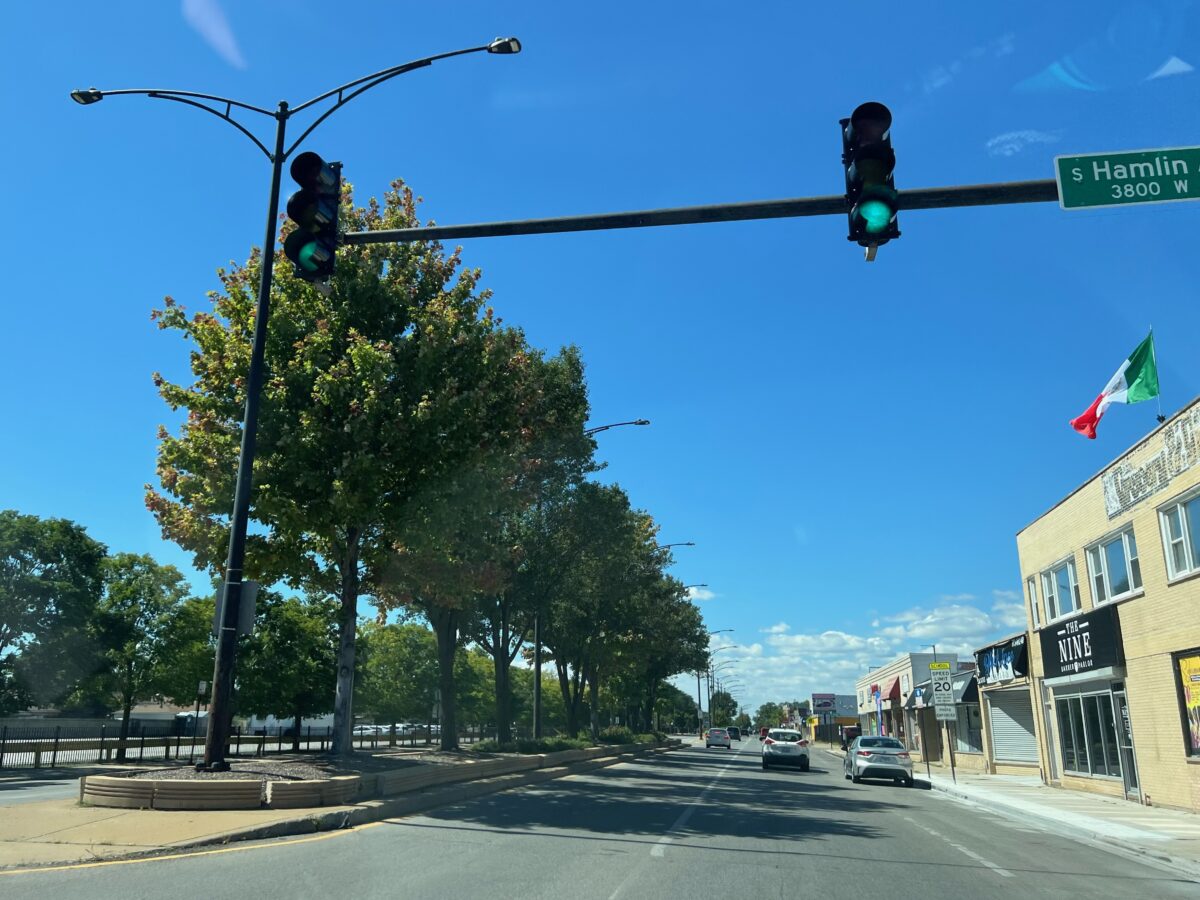I’m out for a walk in my neighborhood and a 4,000–pound vehicle speeds by me at 40, 50, 60 miles per hour just feet from where I stand. A few thoughts come to mind:
“Somebody’s in a hurry,” “That was close,” and several others that are probably best kept to myself.
But the main thing that comes to mind is a question: What’s it going to take to slow these reckless drivers down?
It’s a question many of my neighbors have been asking over the past year after two people were killed in separate hit-and-run crashes while crossing south Pulaski Road: Jiekun Xu in the middle of the afternoon last February and Charlie Mills a few months later, on Easter night.
Last month, the City Council weighed in on the question of traffic safety by debating a trio of “Vision Zero” measures, the most eye-catching of which would have lowered the citywide speed limit to 25 miles per hour.
Although the speed limit vote has been held off, there are reasons to be optimistic about such a change. Other cities that have lowered their speed limits in recent years, such as New York, Boston, and Seattle, have seen significant declines in dangerous speeding, crashes, and fatalities.
But lowering the speed limit is an incomplete answer to this thorny question.
For one thing, the law would not apply to roads managed by the Illinois Department of Transportation that are magnets for speeding, congestion, and vehicle crashes.
Wide streets like Pulaski Road, Cicero Avenue, and Archer Avenue would continue to post speed limits of 30 miles per hour and to facilitate speeds much higher than that.
State legislation would be required to lower the speed limit on Chicago’s many state routes, but simply changing our signs from 30 to 25 won’t make these streets much safer.
Here on the Southwest Side, some neighbors believe stricter enforcement of traffic laws and heightened surveillance are the only way to curb dangerous driving. But while law enforcement may be well-suited to breaking up an active street takeover or investigating a devastating crash, the police can’t be everywhere—and wherever squad cars (or speed cameras) aren’t, that’s where drivers will start to speed right back up.
What we need is a different approach to street design.
The way we build our streets matters and has a big impact on traffic safety. In my neighborhood of Archer Heights, we’ve built Pulaski to be seven lanes wide, with four traffic lanes, a free-and-clear median, and two often unused parking lanes.
It feels like we have a highway cutting through the middle of our residential neighborhood, complete with the debris of car crashes regularly swept to the curb and nary a pedestrian in sight.
Thankfully, the city is piloting a series of temporary, plastic safety infrastructure on Pulaski with an eye towards permanent concrete infrastructure in the near future. The goal is simple: to make it physically impossible for drivers to engage in some of the most dangerous behavior.
Eager to speed through the median, either as part of an overnight drag race or to bypass rush hour traffic? Good luck doing that after the city installs concrete tree planters.
Itching to zip through an unused parking lane for a few blocks, mere feet from pedestrians on the sidewalk? A concrete bumpout at the intersection could make you think twice.
These types of design changes may not seem up to the task of stemming frequent vehicle crashes (more than 1,000 on my thirty-block stretch of Pulaski in 2023). But they can be part of a suite of approaches, along with a lower citywide speed limit, smarter enforcement, and reliable bus service, that can reduce crashes and improve quality of life.
On the days that I walk to the CTA Orange Line from my house, a roughly one-mile trek down Pulaski, it’s not uncommon for me to be the only person on foot. Imagine walking a mile in Chicago through a densely populated neighborhood at 8:00 in the morning, and not seeing a single soul. This is a sure sign we’re doing something wrong.
Safer streets would draw my neighbors out of their homes, out of their cars, and into the community, in addition to reducing crashes and saving lives.
It’s a goal our communities should pursue with all deliberate speed.
Dixon Galvez-Searle is the transit advocacy steward for the local community group The Southwest Collective. A lifelong Chicagoan, he lives in Archer Heights and regularly walks, bikes, and drives throughout the Southwest Side.

